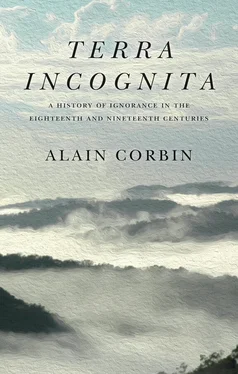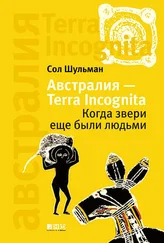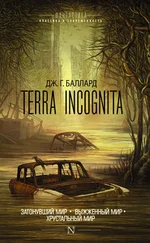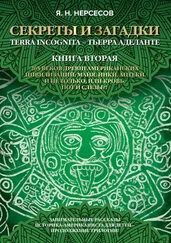Anne-Marie Mercier-Faivre has argued that from 1755, or roughly mid-century, on, disasters were no longer mere signs, but events in their own right: ‘It progressively became a concept that made for a brand-new way of thinking about the world and about mankind.’ 9Stripped of their religious frame of reference, disasters were now open to analysis. Thinking about and trying to understand catastrophes was no longer the sole preserve of the church. That said, a degree of caution was still required. The idea of divine punishment, the fear of everlasting damnation, and the primary goal of salvation had by no means faded from people’s minds. Disasters may now have been considered suitable material for analysis, but they were still a reminder of the transience of life, the gift of a merciful God.
On All Saints’ Day, 1 November 1755, Lisbon was shaken by four major tremors in nine minutes, starting at twenty to ten in the morning. Clouds of sulphurous vapour darkened the sky. A few moments later, a tidal wave – what we would now call a tsunami – five to six metres in height ploughed across the city, causing devastation in its wake. An aftershock struck at around eleven. Fire ravaged the city for five to six days. Looters caused further panic. The worst-affected areas were the low-lying neighbourhoods in the city centre. It is currently estimated that some ten thousand people died. Few of them were from the city’s leading families, who were on their country estates. The king and the royal family were in residence at the Belém Palace.
Though in relative decline at the time, Lisbon was still at this point Europe’s third most important port, after Amsterdam and London. Vast quantities of merchandise were destroyed. Worse, perhaps, in the eyes of the men and women of one of Europe’s great Catholic capitals, sixteen churches collapsed, including the patriarchal cathedral. The opera house and thirty-three townhouses belonging to aristocratic families were also destroyed.
We will now focus for a while on how word of the disaster spread. While the tremors themselves were felt across much of Western Europe, it took around a month for the news to reach gazettes and news-sheets. In Germany, a Cologne gazette was first to break the news, on 21 November. The Gazette de France [ France Gazette ] printed it the following day. By the end of the month, the news had reached most of the German-language press. Until February 1756, the ‘disaster’ was often described as a ‘dreadful catastrophe’, with articles highlighting the scale of the destruction. On 29 November 1755, for instance, a gazette in Bern recorded that ‘seven-eighths of the houses in the city of Lisbon were torn down in six or seven minutes’. It informed its readers that three volcanoes had caused a fire and that 100 to 130 locals had found themselves trapped in the ruins. The total destruction of trade in one of Europe’s busiest commercial cities was the focus of much interest. News-sheets and almanacs soon followed suit, eager to shed sensational light on the parlous state of the world with many a Biblical reference. Though the term ‘catastrophe’ was widely used in the press in the aftermath of the Lisbon earthquake, the much-discussed news of the disaster does not seem to have profoundly challenged an optimistic world view and the idea of God’s providence, particularly in Germany.
The history of the earthquake involves the event itself, its impact, and the subterranean mechanisms that cause such tremors. Societies of the past – the eighteenth century, in this case – did not know what caused the earthquakes they frequently experienced: as we have seen, between 1600 and 1800, at least twenty-seven quakes caused considerable damage. The 1750s were the second major period of seismic activity since the seventeenth century, even before the Lisbon disaster. Not knowing what caused the tremors was difficult to live with and the disastrous consequences were hard to overcome. Since the numerous sources on earthquakes had no idea what caused them, their principal focus was on the local impact, damage, institutional reaction to the chaos, how the news spread, and on recording the memory of the disaster. The folk memory of earthquakes was also focused on the destruction of urban centres. The many earthquakes that shook France in the seventeenth century were almost completely forgotten, remembered at most locally or regionally. In the latter half of the eighteenth century, however, earthquakes across France were recorded in hundreds of narratives, scholarly and academic debates and dozens of articles in periodicals, maps and catalogues. Scholars began to study the country’s seismic activity. The years 1755–64 represent a high point in interest in the topic, before a slight decline. Interestingly, earthquakes became a hot topic for debate prior to the Lisbon disaster, though the event certainly also drove the process subsequently.
From the point of view of a history of ignorance, the most important issue is that scholars began to ask questions: what triggered the disaster and how did it unfold? From 1755 on, the French Academy of Sciences launched a fully fledged earthquake research programme 10that built an archive of such events. According to the Journal encyclopédique [ Encyclopedic Journal ] of 1 May 1756, ‘All physicists are working to find the actual cause of earthquakes. […] The cleverest circles […] are making it a topic of conversation.’ Of particular interest for this book is the article’s claim that ‘even the ignorant dare talk about it. […] In a word, everyone wants to discover this terrible secret of nature.’ 11
The mid-eighteenth century saw the rise of subscription libraries and educational and scientific publications. The closing quarter of the century was a golden age of popular scientific debate. In this context, the problem of earthquakes was still widely discussed in fashionable salons at the end of the century. It is no exaggeration to call this the ‘earthquake craze’, 12akin to the fashion for hot-air ballooning. Even the rural population took an interest in the topic. The curiosity and suffering caused by the shortfall in scientific knowledge were still intense in the closing years of the eighteenth century, though curiosity about earthquakes was tending to give way to an interest in volcanoes. Even so, a play about the Great Lisbon Earthquake was still being performed in Paris in the very early nineteenth century. As late as 1878, a set of clockwork figures was shown in Orleans, performing two events from history: Joan of Arc delivering the city – and the Lisbon earthquake.
Scholars spent the half-century following the disaster arguing about its causes. Lisbon opened up a space for debate. Three types of explanation were put forward. The first argued for a subterranean inflammation of sulphurous and bituminous matter, attributing the earthquake to an underground fire. The second, which held most sway in the latter half of the century, believed that a dilation in the air triggered the tremors. This explanation was driven by the fashion for studying the physical properties of gases. The third explanation was based on theories of electricity that were highly popular at the end of the century; it held that the disaster was caused by the instantaneous propagation of electric fluid through all conducting bodies.
What is most interesting is that people were now trying to understand the disaster, to interpret it, protect themselves from its effects and measure its impact on society, quite apart from the question of salvation. The catastrophe played a significant role in establishing the earth sciences.
At the same time, a new research focus on fossils and the fledgling study of geological strata led to renewed challenges to the unity and universality of the Great Flood, as scholars began to posit a series of local floods and modify their thinking about the age of the earth.
Читать дальше






![Сергей Спящий - Время terra incognita [СИ]](/books/395082/sergej-spyachij-vremya-terra-incognita-si-thumb.webp)



